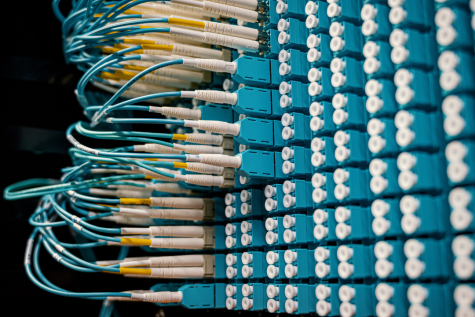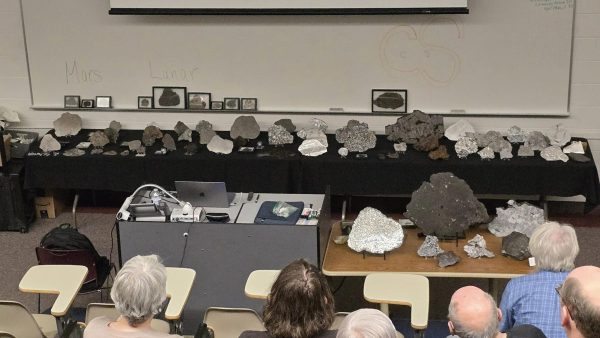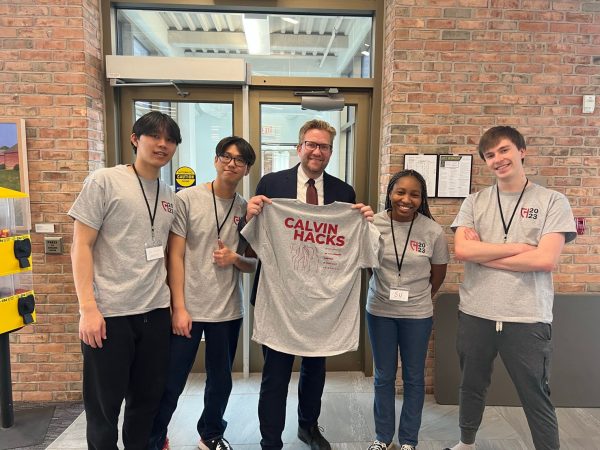Engineering department to roll out two new concentrations starting fall 2024
The new EES concentration focuses on creating and maintaining a more sustainable environment.
The engineering department is introducing a energy, environment and sustainability (EES) concentration and a mechatronics concentration in the fall of 2024.
Energy, environment and sustainability
According to Matthew Heun, mechanical engineering professor at Calvin, one of the primary inspirations for creating the EES concentration is the increased societal awareness about the relationship humans have with the environment.
“People are becoming much more concerned about the way humans are treating the non-human parts of the creation,” said Heun.
According to Heun, engineers have a pivotal role to play when it comes to reshaping the relationship humans have with the environment. Engineers can see their role in the creation of new technology which reshapes the way humans use or give back to the environment.
Beginning with Calvin’s Statement on Sustainability released in 2007, the university has been making various approaches to increase knowledge and awareness on the state of the environment, and what role humans have to perform in the changing environment.
The new EES concentration derives its course requisites primarily from the mechanical and civil engineering concentrations, along with some additional courses.
The new EES concentration will therefore consist of several courses which are directed towards creating and maintaining a more sustainable environment such as ENGR 306 (environmental engineering) and ENGR 319 (introduction to thermal/fluid sciences).
In addition to general engineering courses, the concentration would also consist of non-engineering classes such as Economics 233 — the economics of energy and sustainability.
By introducing the EES concentration, the department hopes to attract students who are interested in tackling challenges that relate to the environment, according to Heun. However, depending on what course a student has taken, integrating into the concentration for current students could be especially challenging for upperclassmen.
Alexandria Gauss, a junior studying mechanical engineering at Calvin, and Diana Bracamonte, a sophomore studying electrical and computer engineering, are among the students interested in moving to the EES concentration.
“My goal is to merge my passion for mechanical engineering with environmental engineering.”
— Alexandria Gauss
According to Gauss, she has always been interested in the way mechanical engineering intersects with the environment.
“Overall, my goal is to merge my passion for mechanical engineering with environmental engineering,” said Gauss.
For Bracamonte, it is her love and concern for the world that inspired her to consider making a switch in concentration.
I would love to see the world through this topic, … [and] know what the best options are for a city … struggling with energy issues.
— Diana Bracamonte
“I would love to see the world through this topic, like energy in different cities, [and] know what the best options are for a city … struggling with energy issues,” said Bracamonte.
According to Heun, students pursuing the EES concentration are able to take a variety of career paths in both the mechanical and civil areas of engineering.
Students could take a career path where they work on the energy systems of automobiles, buildings, air conditioning and renewable energy or even work in existing coal, natural gas and electricity production industries, Heun told Chimes.
Mechatronics
The engineering department will also introduce the mechatronics concentration in the fall of 2024, which would be a concentration that exposes students more to the working of machines, and how to create and manipulate those machines.

According to Renard Tubergen, associate professor of mechanical engineering at Calvin, he was really inspired to create an intermediate category between the mechanical side and electrical side of the field of engineering, after seeing how interested students were in the field of machine work.
The coursework for the mechatronics concentration would consist primarily of courses taken from the mechanical and electrical concentrations.
According to Tubergen, the current plan is to not include courses focusing on thermodynamics, heat, energy and fluid dynamics in the concentration. Rather, the concentration will focus on electrical courses like digital signals and PLC control.
Tubergen told Chimes that the new concentration hopes to provide students with the skills necessary to pursue a career path in any field of robotics.
Any robot, any machine that builds things … has that marriage of electrical components and mechanical components, and so those are the places where we apply our skills.
— Renard Tubergen
“Any robot, any machine that builds things … whether that’s even a blender or a toaster — has that marriage of electrical components and mechanical components, and so those are the places where we apply our skills,” said Tubergen.






